Versions Compared
| Version | Old Version 13 | New Version Current |
|---|---|---|
| Changes made by | ||
| Saved on |
Key
- This line was added.
- This line was removed.
- Formatting was changed.
Teams are a group of individuals clubbed together by virtue of one or more common attributes. Every company is made of such teams, grouped by their functions, expertise or some other attributes depending on the business need & strategy.
Read more about the concept here.
Employee Success UpRaise supports the creation of such teams. A team can have its title, team members, a team lead (a special type of team member), a parent team & type. All this information is used to create org hierarchy chart within Employee SuccessUpRaise.
Employee Success admin can Any UpRaise user with sufficient permissions can manage teams, navigate to the ' teams ' tab on company directory page via administration menu items.
The team teams tab lists all the teams currently available in the system. By default, teams can be viewed in a list view. One can switch the view to org chart by using the buttons highlighted below. At the time of Employee Success UpRaise installation following teams are created by default - Marketing, Sales, Software Development, Software QA, Support.
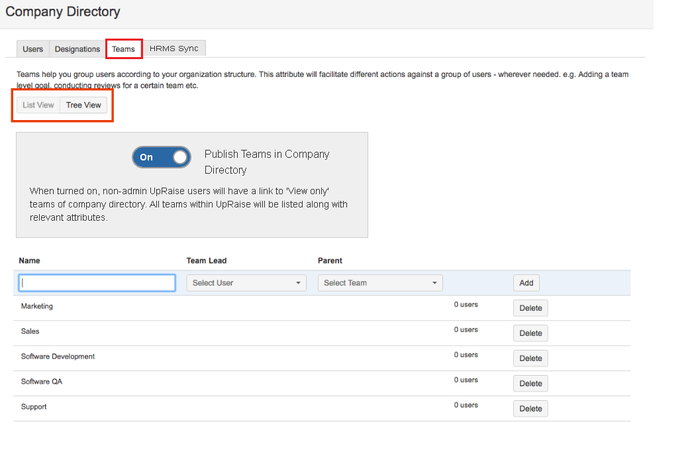 Image Removed
Image Removed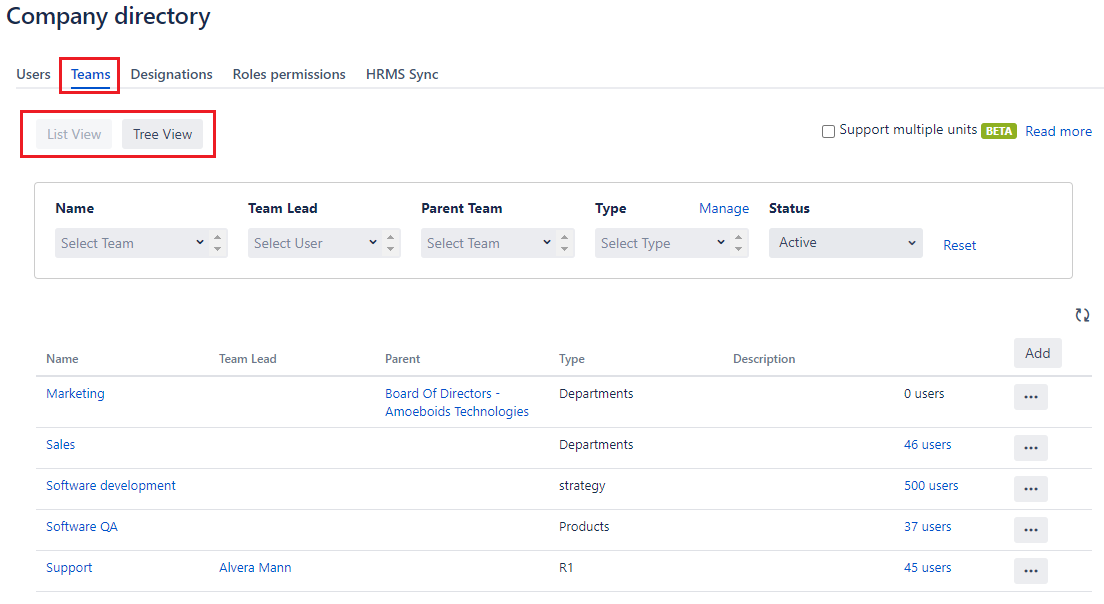 Image Added
Image AddedList view
AddingAdding a team
Employee Success UpRaise admin can add a new team easily by clicking on add option in teams tab on company directory page. Team lead & parent team are not mandatory while adding a new team.
Clicking on add option opens up a pop-up that allows you to add different team attributes and save the team.
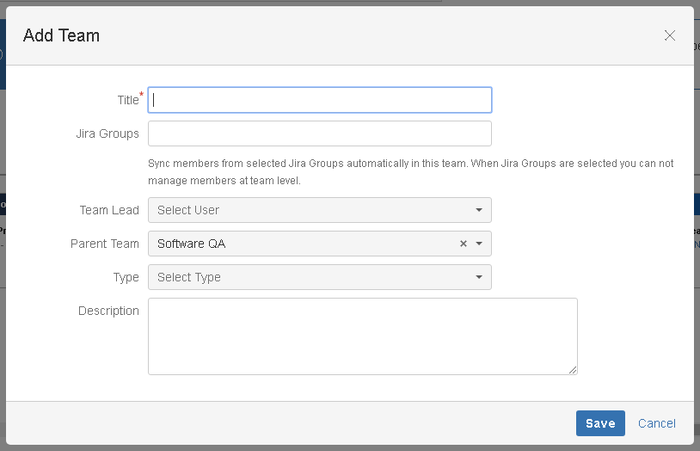 Image Removed
Image Removed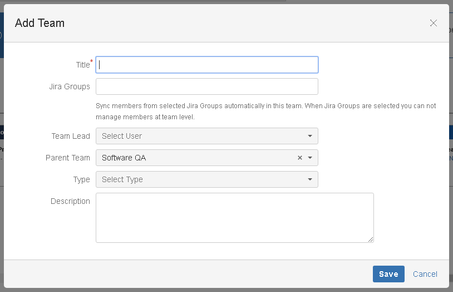 Image Added
Image Added
Team attributes:
Title: Add the title of the team. Eg. Sales Marketing, Customer Success, etc.
Jira groups : Create teams synced with Jira groups. Read How to sync
Employee SuccessUpRaise teams with Jira groups? for more details.
Team lead: When you click on team lead field you will get a drop down to select a user.
Parent team: This field give you a list of all existing teams in the system so you can select a team as parent team.
Type: When you click on this field, you will get a drop down list of previously added types. If you want craete a new type just start typing one and add it to the list there itself.
Description: You can add some description about the team.
Once done with these all attributes, just click on save and you will have a new team on your org chart.
Another way a team can be added is from the users tab, while adding or editing a user. New team text would appear in the bracket as highlighted below. When the user is added/updated, new team will be reflected in the team tab.
 Image Removed
Image Removed Image Added
Image Added
Editing a team
 Image Removed
Image Removed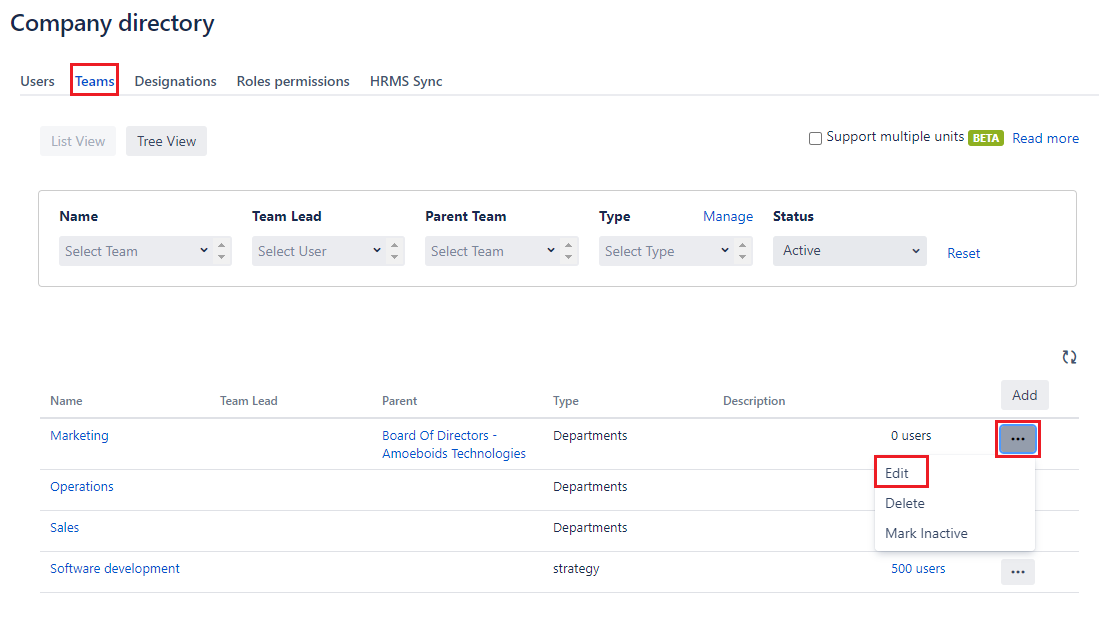 Image Added
Image Added
Note that while adding or editing a team, team lead needs to be a user who is already available in Employee Success UpRaise users tab. Importantly, Employee Success UpRaise who do not yet have access can also be added to teams & even can be made team leads. But they will still not be able to access Employee SuccessUpRaise, until access is given to them. So you can easily build the complete hierarchy even during pilot & when roll-out is complete, all the users will be properly associated with their teams.
| Note | icon | false
|---|
|
Deleting a team
 Image Removed
Image Removed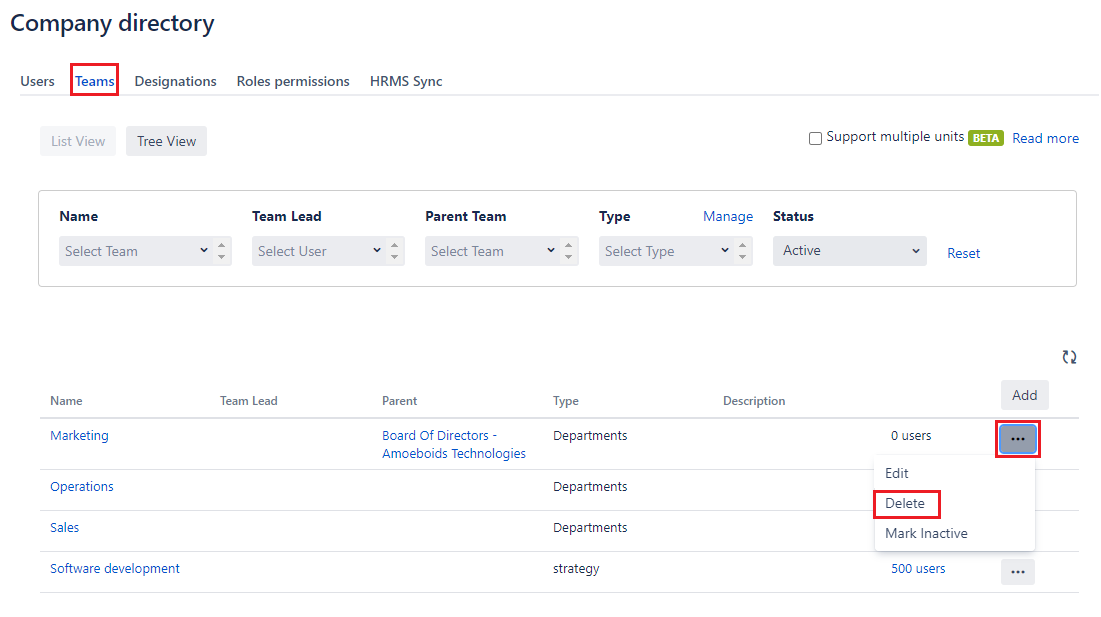 Image Added
Image AddedA team can only be deleted if there are no users, objectives associated with that team. Remove all the associated users from the team (including the team lead), delete all team level objectives related to that team & then you can delete the team.
| Note | icon | false
|---|
If there are any team objectives imported in forms, in that case first delete those distribution/s, then delete relevant team objectives, and then system allows you to delete the team. |
Users belonging to selected team
Teams tab - list view also allows Employee Success UpRaise admin to see the list of users who are members of a particular team (refer to the screenshot below). Clicking on the number of users (link) opens a pop-up that lists down all the users with corresponding managers & teams. Image Removed
Image Removed
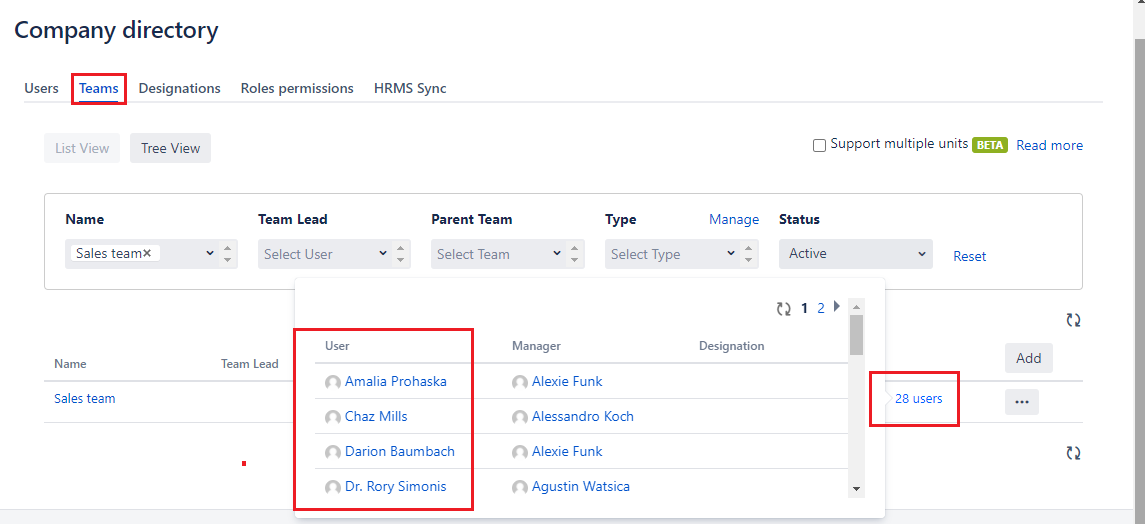 Image Added
Image AddedAssigning a team lead
Team lead is a special type of team member. While adding or editing a team, one of the existing Employee Success UpRaise users can be made a team lead.
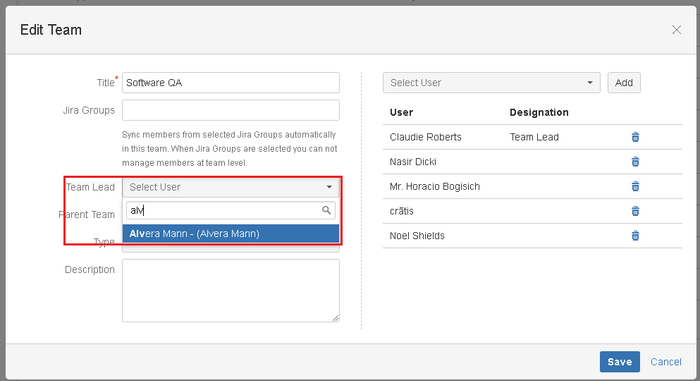 Image Removed
Image Removed
Making a user team lead of a team is automatically reflected on his profile with (TL) - in the users tab as well as on his own profile.
 Image Removed
Image Removed
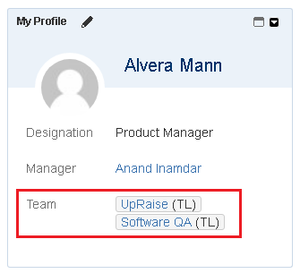 Image Removed
Image Removed
| icon | false |
|---|
 Image Added
Image AddedRemoving a team lead
A team lead can be removed from the company directory → team tab → edit option, only by the Employee Success admin/super adminUpRaise user with sufficient permissions. Image Removed
Image Removed
 Image Added
Image AddedThen on edit team pop-up, remove existing user from team lead field and search for another & save or just click on save.
 Image Removed
Image Removed
For a team lead to be removed from the team, she first needs to be removed as team lead from the team tab. Until then x does not appear on the dashboard as well as users tab.
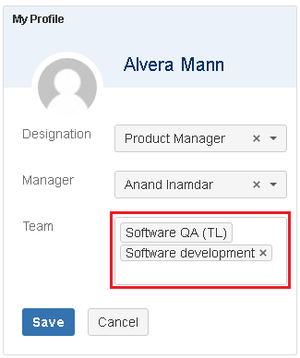 Image Removed
Image Removed
 Image Removed
Image Removed
 Image Added
Image Added
Adding team members
Addition of team members is not directly possible while creating a team however, you can add team members by editing the existing team. Employee Success UpRaise users can be added to the team by editing their team/s from users tab while adding a new user or updating an existing one. This option is only available for Employee Success UpRaise administrators.
From users tab >> edit user's record -
 Image Removed
Image Removed Image Added
Image Added
From teams tab >> edit team and add new team members -
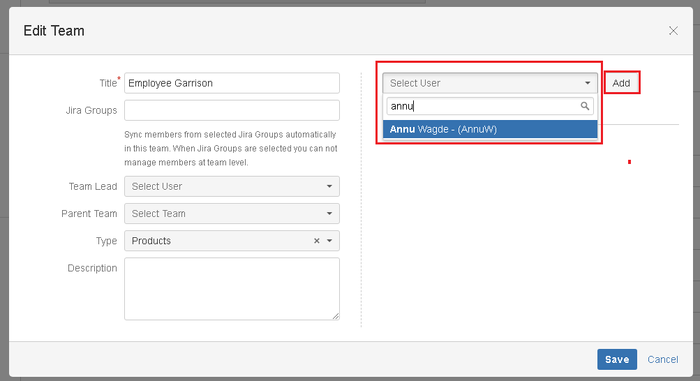 Image Removed
Image Removed
Or the team/s can also be added/edited by the Employee Success non-admin users for themselves if self service is turned on.
 Image Removed
Image Removed
 Image Added
Image Added
Removing team members
Similar to the addition of team members, removal of team members can be done from the users tab, teams tab or from the dashboard by users themselves.
| Note |
|---|
Note that one user can belong to multiple teams. |
Treeview
Treeview helps you visualise organisational structure. Similar to list view, following actions - adding teams, editing teams, assigning/removing team leads, adding/removing team members are available in treeview. 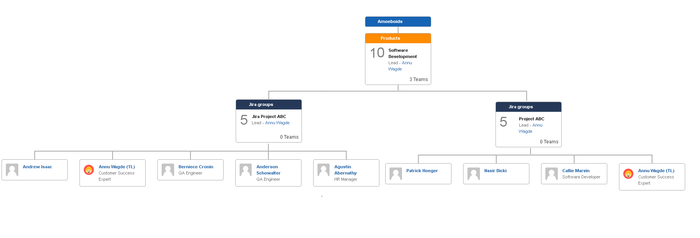 Image Removed
Image Removed
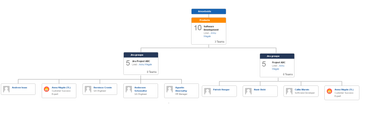 Image Added
Image AddedMouse over on a node in treeview, & options to edit(pencil icon), delete & add will appear. Image Removed
Image Removed
 Image Added
Image AddedAdding a team
Click on plus sign and you will see a pop-up to add new team.
 Image Removed
Image Removed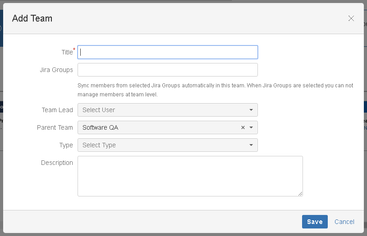 Image Added
Image Added
Team attributes:
Title: Add the title of the team. Eg. Sales Marketing, Customer Success, etc.
Jira groups : Create teams synced with Jira groups. Read How to sync
Employee SuccessUpRaise teams with Jira groups? for more details.
Team lead: When you click on team lead field you will get a drop down to select a user.
Parent team: This field give you a list of all existing teams in the system so you can select a team as parent team.
Type: When you click on this field, you will get a drop down list of previously added types. If you want craete a new type just start typing one and add it to the list there itself.
Description: You can add some description about the team.
Once done with these all attributes, just click on save and you will have a new team on your org chart.
Editing a team
 Image Removed
Image Removed Image Added
Image AddedFor editing team click on pencil icon as shown in the image above & you will get a pop-up of edit team.
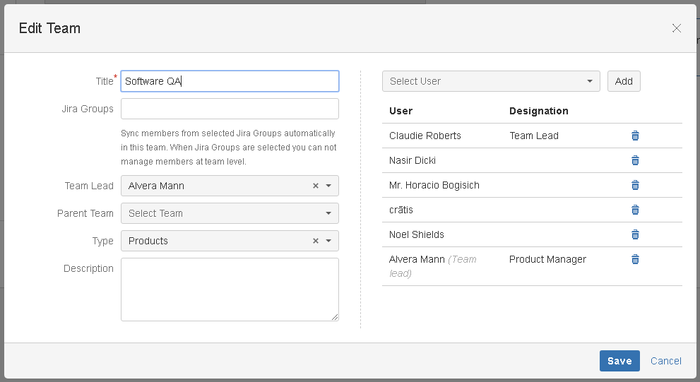 Image Removed
Image Removed Image Added
Image Added
Deleting a team
Click on the delete icon as shown in the image above. If you do not have any user associated, team objectives and forms with team's objectives then team can be deleted.
 Image Removed
Image Removed Image Added
Image AddedOn this page
| Table of Contents | ||||
|---|---|---|---|---|
|
In this section
| Child pages (Children Display) | ||
|---|---|---|
|